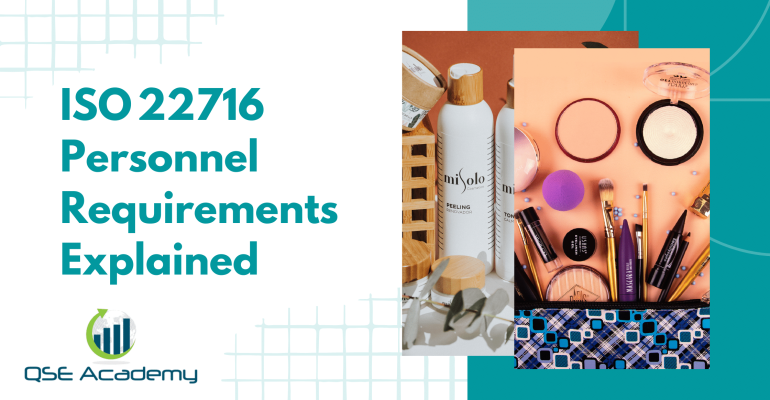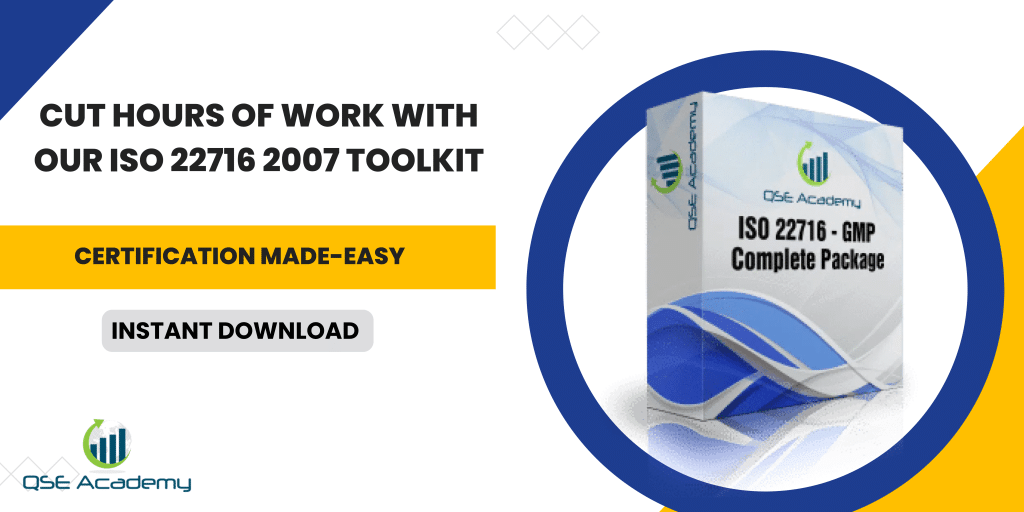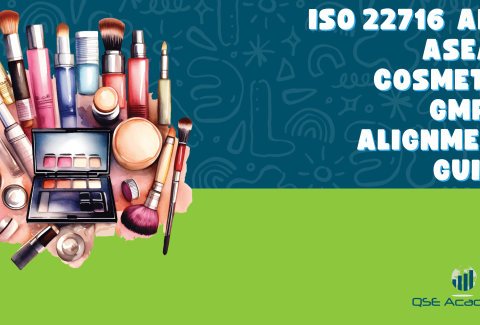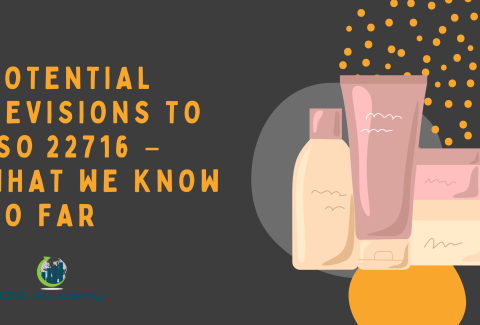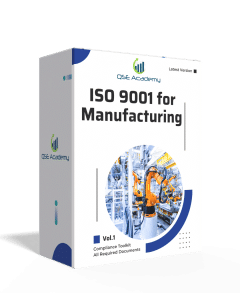ISO 22716 Personnel Requirements Explained
Last Updated on October 24, 2025 by Hafsa J.
Why Personnel Matter in ISO 22716
Every quality system stands on the shoulders of people. Procedures, equipment, and facilities can only go so far if the team behind them isn’t trained or clear on what’s expected.
I’ve seen cosmetic manufacturers with spotless production floors still fail audits—not because of bad intentions, but because staff weren’t fully aware of their GMP responsibilities. ISO 22716 was designed to prevent exactly that.
This part of the standard focuses on personnel competence, awareness, and hygiene. It ensures that everyone—from the production operator to the QA manager—understands their role in maintaining product safety and consistency.
In this article, you’ll learn:
-
What ISO 22716 actually requires when it comes to personnel.
-
How to define roles, responsibilities, and training.
-
Real-world mistakes I’ve seen during audits—and how to avoid them.
-
A few practical tools you can use to keep your team compliant.
Because at the end of the day, ISO 22716 isn’t just about documents—it’s about people doing the right thing, the right way, every day.
Understanding ISO 22716 Personnel Requirements (Clause 6.1 – 6.4)
ISO 22716 puts people right at the center of Good Manufacturing Practices. It’s not enough to have procedures—you need competent people to apply them consistently.
The standard expects every person involved in manufacturing, testing, storing, or handling cosmetic products to be qualified, trained, and aware of their impact on product quality. That means each role should have clear expectations for education, skills, and experience.
Here’s what I’ve noticed in many cosmetic companies: the gap isn’t usually technical—it’s organizational. Tasks get assigned before competence is fully defined. Someone ends up handling batch records or operating filling equipment without formal approval or proper training. That’s an easy audit finding waiting to happen.
Pro Tip:
Create a simple competence matrix. List every key GMP activity—cleaning, weighing, mixing, sampling—and match it to qualified personnel. This instantly shows auditors you’ve verified who’s authorized to perform each task.
Common Pitfall:
Relying on verbal assurances instead of documented evidence. “She’s been here for years; she knows what to do” won’t satisfy an auditor. Keep written records of training and qualification for every role.
When these basics are in place, everything else—training, hygiene, documentation—flows much more smoothly.
Defining Roles and Responsibilities under ISO 22716
Clear roles prevent confusion. It sounds simple, but I’ve seen too many teams where job titles overlap, or nobody really knows who’s accountable for what. Under ISO 22716, that’s a big risk.
The standard expects each employee to have defined responsibilities that match their competence. Everyone involved—from the production operator to the quality control analyst—should know where their job starts and ends. This isn’t about hierarchy; it’s about clarity.
Here’s what works well in practice:
-
Create job descriptions that specify GMP-related duties and decision-making authority.
-
Use a RACI chart (Responsible, Accountable, Consulted, Informed) to clarify who handles which processes—especially for cleaning, maintenance, and batch release.
-
Make these documents part of your quality manual or HR files so they’re always accessible.
Pro Tip:
When reviewing roles, walk through an actual process. Ask: “Who ensures this step meets GMP?” and “Who signs off?” If your team hesitates, your responsibilities need tightening.
Common Pitfall:
Assigning overlapping duties without alignment. For example, if production and QA both think the other is responsible for checking labels, it’s only a matter of time before errors appear on your shelves.
When everyone knows their role—and it’s backed by documentation—you not only meet ISO 22716, you build a culture where accountability feels natural.
Training Programs for ISO 22716 Compliance
Training is where theory turns into action. You can have perfectly written procedures, but if your team doesn’t fully understand them, compliance won’t stick.
ISO 22716 requires that everyone performing GMP tasks receives initial and ongoing training—not just once at hiring, but regularly, and whenever processes or equipment change.
In my experience, the most effective programs are built around two simple questions:
-
What does each role need to know to do the job right?
-
How will we prove they actually learned it?
A good training plan includes:
-
Role-based modules: tailor sessions for production, QC, maintenance, and warehousing.
-
Refresher schedules: yearly is a good baseline, but adjust if your operations evolve quickly.
-
Effectiveness checks: short quizzes, observations, or sign-offs by supervisors.
-
Documentation: signed attendance sheets, digital logs, or certificates linked to each employee file.
Pro Tip:
Build a competency-based training matrix. List every GMP activity, the person responsible, and their latest training date. This one document saves hours during audits.
Real Example:
A mid-size cosmetics firm I worked with struggled to track refresher training. They switched to a shared online tracker—nothing fancy—and audit findings around training dropped to zero within a year.
Common Pitfall:
Treating training as a checkbox. Auditors can tell when staff memorized slides but can’t explain why hygiene or documentation matters. Keep it practical and job-specific.
When training feels relevant and continuous, compliance becomes part of daily work, not a yearly scramble before the audit.
Hygiene, Protective Clothing, and Health Monitoring
No matter how sophisticated your equipment is, one small hygiene lapse can ruin an entire batch. I’ve seen it happen—an ungloved hand, a loose hairnet, or an employee returning from a break without changing gowning.
ISO 22716 makes it clear: personnel hygiene is non-negotiable. Every person entering production areas must protect the product from contamination, and that starts with discipline and consistent habits.
Here’s what good practice looks like:
-
Personal hygiene policies: written instructions on handwashing, smoking, eating, and personal care before entering GMP areas.
-
Protective clothing: clean uniforms, gloves, caps, and shoe covers suited to each work zone.
-
Health monitoring: ensure employees with open wounds, colds, or infections are temporarily reassigned away from production lines.
-
Changing and gowning procedures: well-marked zones and clear signage prevent cross-contamination.
Pro Tip:
Implement a quick “fit-for-work” check before every shift. It’s as simple as a supervisor confirming hygiene readiness and noting it in a daily log.
Common Pitfall:
Overlooking temporary staff or contractors. They often skip induction hygiene training, yet they work in the same critical areas.
Real Example:
A small cosmetic factory I assisted reduced product rejections by 40 % after enforcing a stricter gowning policy. It wasn’t technology—it was people taking hygiene seriously.
Keeping hygiene consistent shows auditors that your team understands GMP isn’t just paperwork; it’s daily discipline that protects your brand.
Managing External Personnel and Visitors
Visitors and contractors are often overlooked in GMP compliance, but they can pose serious contamination risks if not managed properly. ISO 22716 expects cosmetic manufacturers to apply the same hygiene and safety rules to everyone who steps into production or storage areas—whether they’re full-time staff, consultants, or maintenance technicians.
I’ve seen well-run facilities slip up here. A contractor walks in to fix a machine wearing outdoor shoes, no gowning, and suddenly your clean zone is compromised. It only takes one small oversight.
Here’s how to stay in control:
-
Visitor procedures: require everyone to sign in, wear protective clothing, and stay within approved zones.
-
Contractor induction: provide a short GMP briefing or checklist before they start work.
-
Supervision: assign a trained staff member to accompany them if they need access to controlled areas.
-
Documentation: record each visit with names, times, and authorized personnel.
Pro Tip:
Use a simple Visitor Declaration Form that confirms they’re free from illness and understand hygiene expectations. It’s quick, and auditors love seeing it.
Common Pitfall:
Letting regular maintenance staff skip induction “because they’ve been here before.” Familiarity isn’t compliance. Every visit counts.
When everyone entering your facility follows the same GMP standards, you’re not just protecting your products—you’re showing auditors that control doesn’t stop at your payroll line.
Recordkeeping and Competence Evidence
Training and competence mean little without proof. ISO 22716 expects cosmetic manufacturers to maintain complete, traceable records showing that personnel are qualified, trained, and authorized for their roles.
I’ve seen many companies handle this part casually—scattered spreadsheets, unsigned attendance sheets, or missing certificates. Then the audit comes, and everyone scrambles. Keeping documentation organized isn’t just for auditors; it’s how you track growth, accountability, and consistency.
Here’s what good recordkeeping looks like:
-
Personnel files: include job descriptions, qualification evidence, and health declarations.
-
Training logs: signed attendance sheets or digital records showing dates, topics, and trainers.
-
Competency assessments: supervisor evaluations or skill checklists tied to real GMP tasks.
-
Change control links: when procedures change, update who’s been retrained and when.
Pro Tip:
Centralize everything. Whether it’s a digital HR system or a shared drive, keep one controlled location for personnel documentation. It makes internal audits painless and prevents last-minute chaos.
Common Pitfall:
Forgetting to update training records after internal promotions or procedure revisions. If someone moves from operator to line leader, their competence must be re-evaluated and documented.
In one facility I worked with, the QA manager linked personnel files to their CAPA database—so every time a corrective action mentioned “operator error,” it triggered a quick review of that employee’s training. Smart move, and it impressed the auditors.
Solid records don’t just show compliance—they demonstrate control. They prove that your team’s competence is intentional, not assumed.
FAQs – ISO 22716 Personnel Requirements
Q1: How often should ISO 22716 training be conducted?
There’s no fixed number in the standard, but annual refreshers are a solid baseline.
In my experience, training should happen whenever something changes—new equipment, updated procedures, or new hires. A short quarterly “refresher talk” can also help keep awareness high without disrupting production.
Q2: Do contractors or temporary staff need GMP training too?
Absolutely. ISO 22716 makes no exceptions. Anyone entering GMP areas—whether they’re electricians, cleaners, or consultants—needs to understand basic hygiene, gowning, and contamination risks.
I always recommend giving them a short induction session and requiring a signed acknowledgment form before they start work.
Q3: What counts as proof of competence during an audit?
Auditors look for objective evidence, not just verbal confirmation.
That means documented training records, attendance sheets, qualification certificates, or supervisor assessments. Even better if you can link those records to specific tasks—showing that only trained personnel are authorized for critical activities.
Key Takeaways and Next Steps
At the heart of ISO 22716, personnel requirements are about one simple truth: your people define your product quality. You can invest in new equipment or spotless facilities, but without competent, trained, and responsible staff, compliance will always feel shaky.
Here’s what to remember:
-
Define roles clearly and link them to actual competence.
-
Keep training continuous, not one-time.
-
Treat hygiene as a mindset, not a checklist.
-
Document everything—if it’s not recorded, it didn’t happen.
In my work with cosmetic manufacturers, the most successful teams share one habit: they treat every audit as a learning moment, not a test. When people understand why GMP matters, ISO 22716 compliance becomes second nature.
If you’re ready to strengthen your personnel system, start with your documentation.
QSE Academy’s ISO 22716 Documentation Toolkit includes templates for training matrices, role descriptions, hygiene policies, and more—all designed to save you time and keep your records audit-ready.
Take the next step — explore how we can help your team stay compliant, confident, and inspection-ready.
Whether it’s ISO 9001, ISO 22000, or the cosmetics-focused ISO 22716, I’ve spent my career I’m not here to call myself an expert—I prefer “enthusiast” because I truly love what I do. When I’m not writing about standards, you’ll probably find me playing Piano 🎹, connecting with people, or diving into my next big project💫. I’m an engineer specialized in the food and agricultural industry
make ISO standards less intimidating and more approachable for everyone.
turning complex jargon into clear, actionable steps that businesses can actually use.
There’s something incredibly rewarding about helping people navigate food safety and quality management systems
in a way that feels simple, practical, and even enjoyable.
I have a Master’s in QHSE management and over 12 years of experience as a Quality Manager
I’ve helped more than 15 companies implement ISO 9001, ISO 22000, ISO 22716, GMP, and other standards
My clients include food producers, cosmetics manufacturers, laboratories, and service companies
I believe quality systems should be simple, useful, and efficient.

